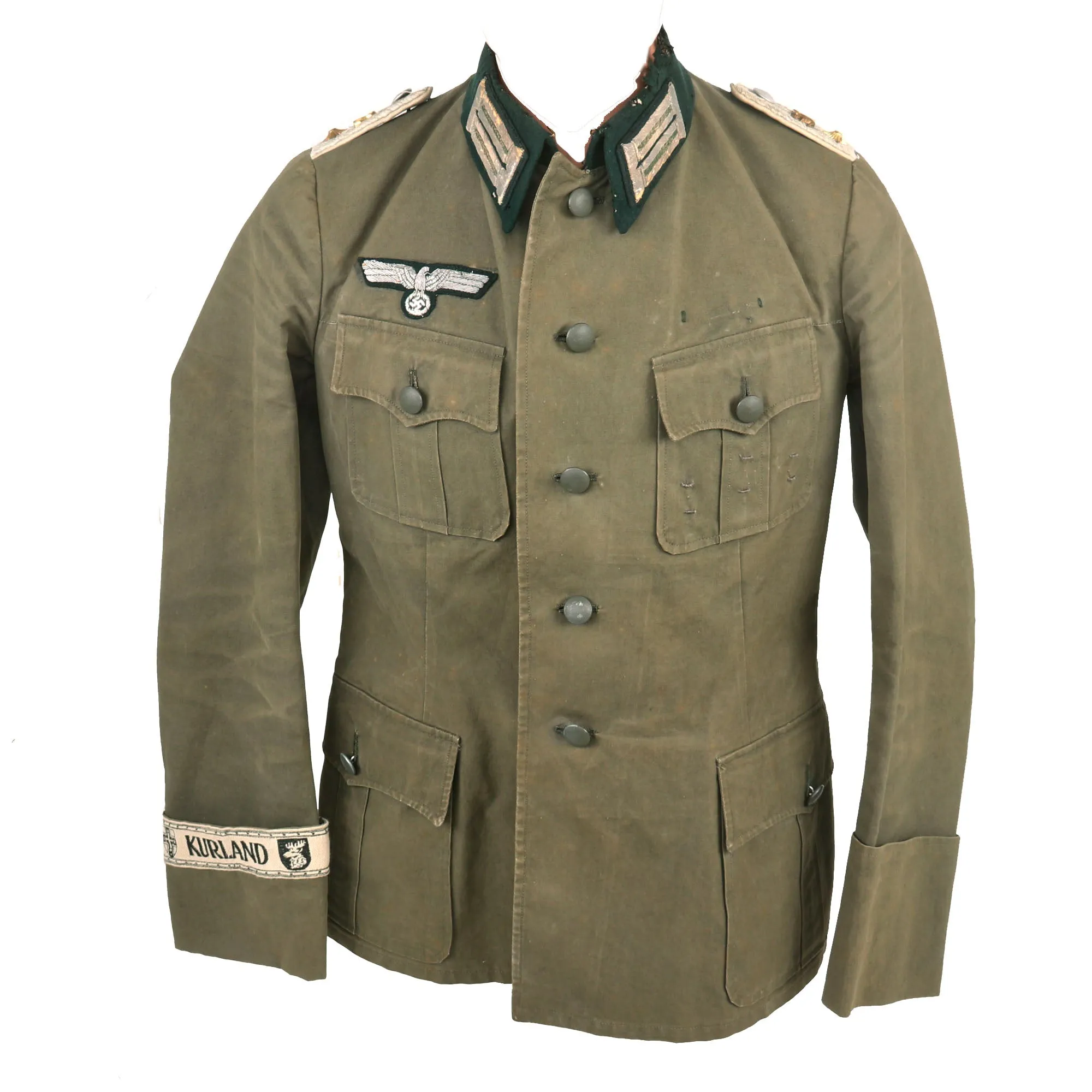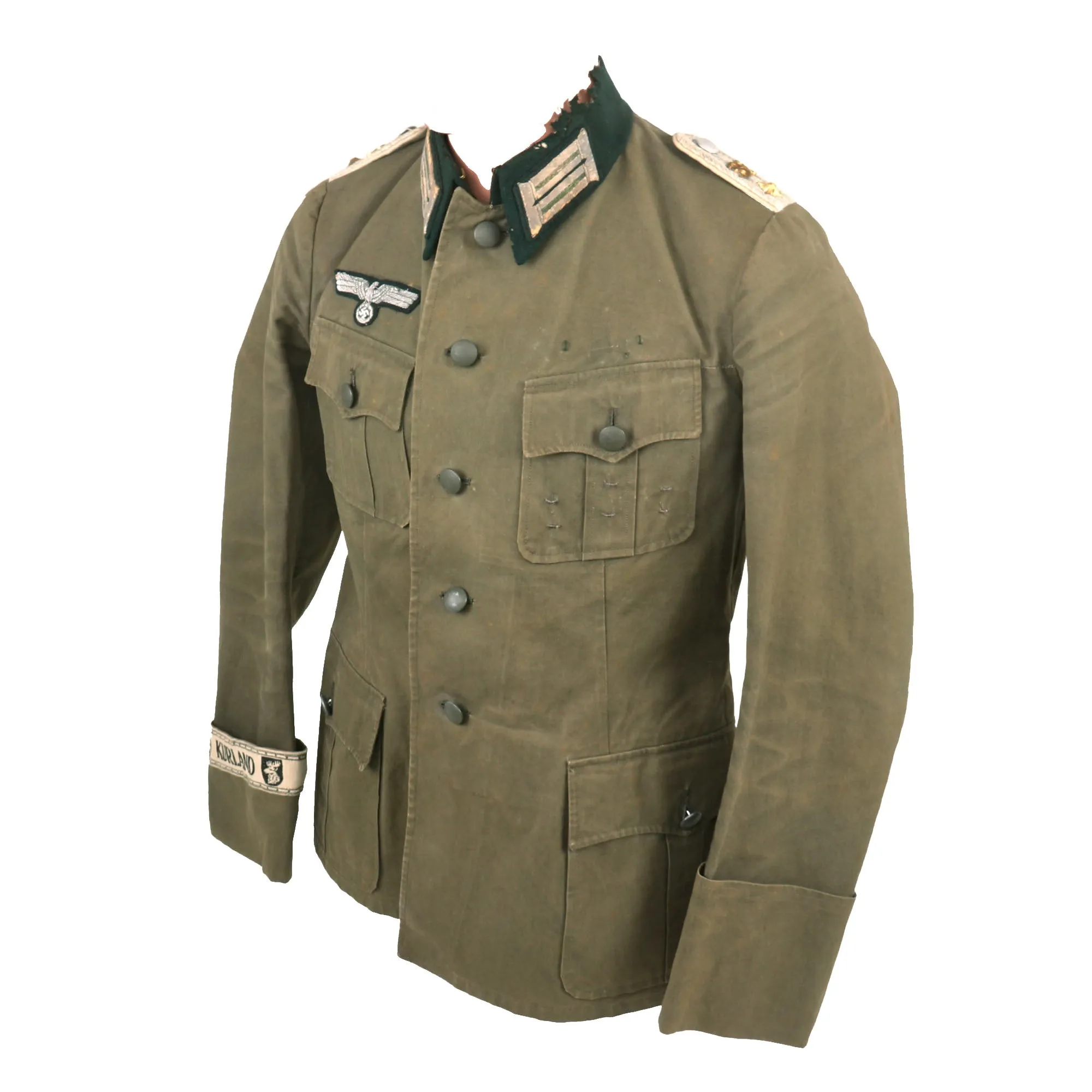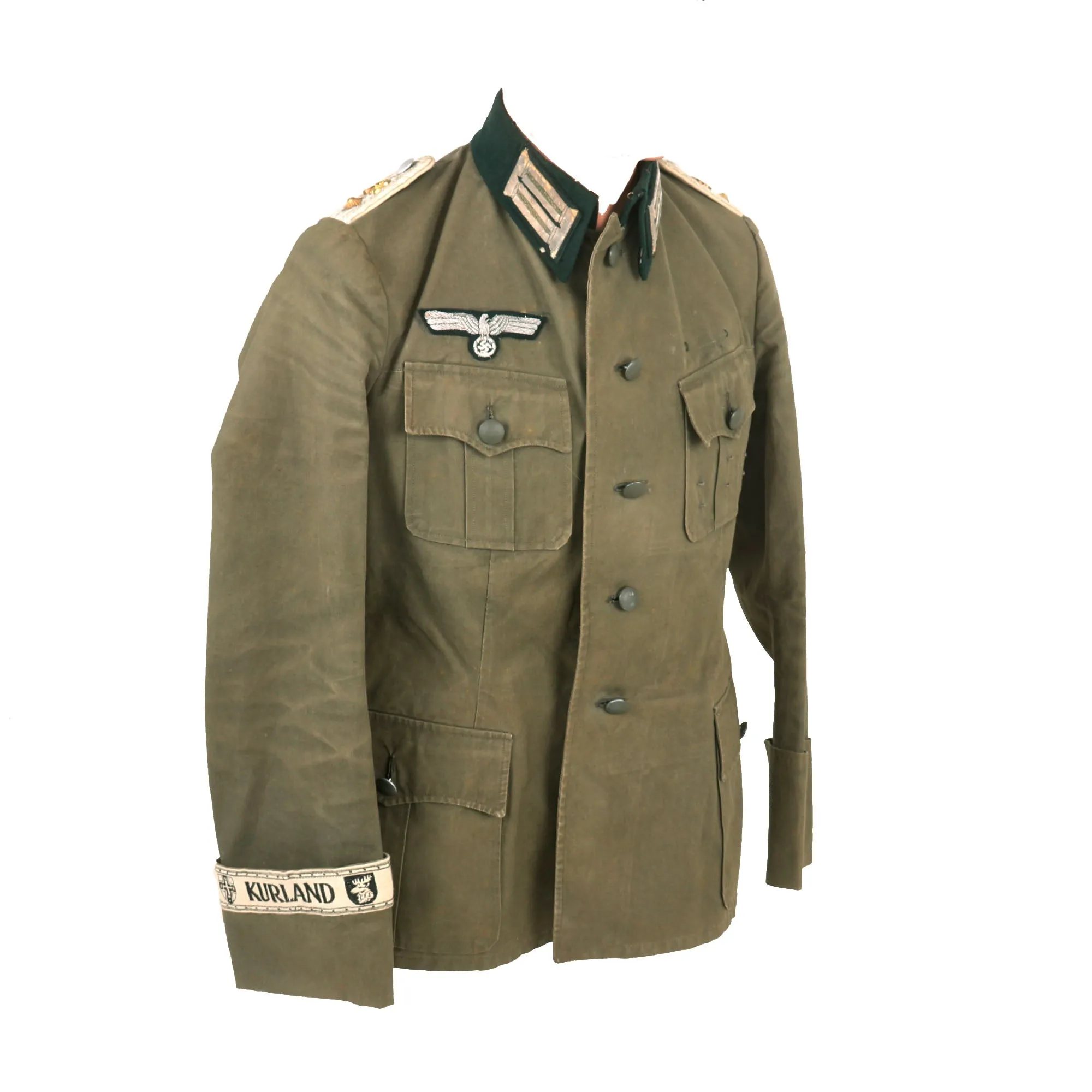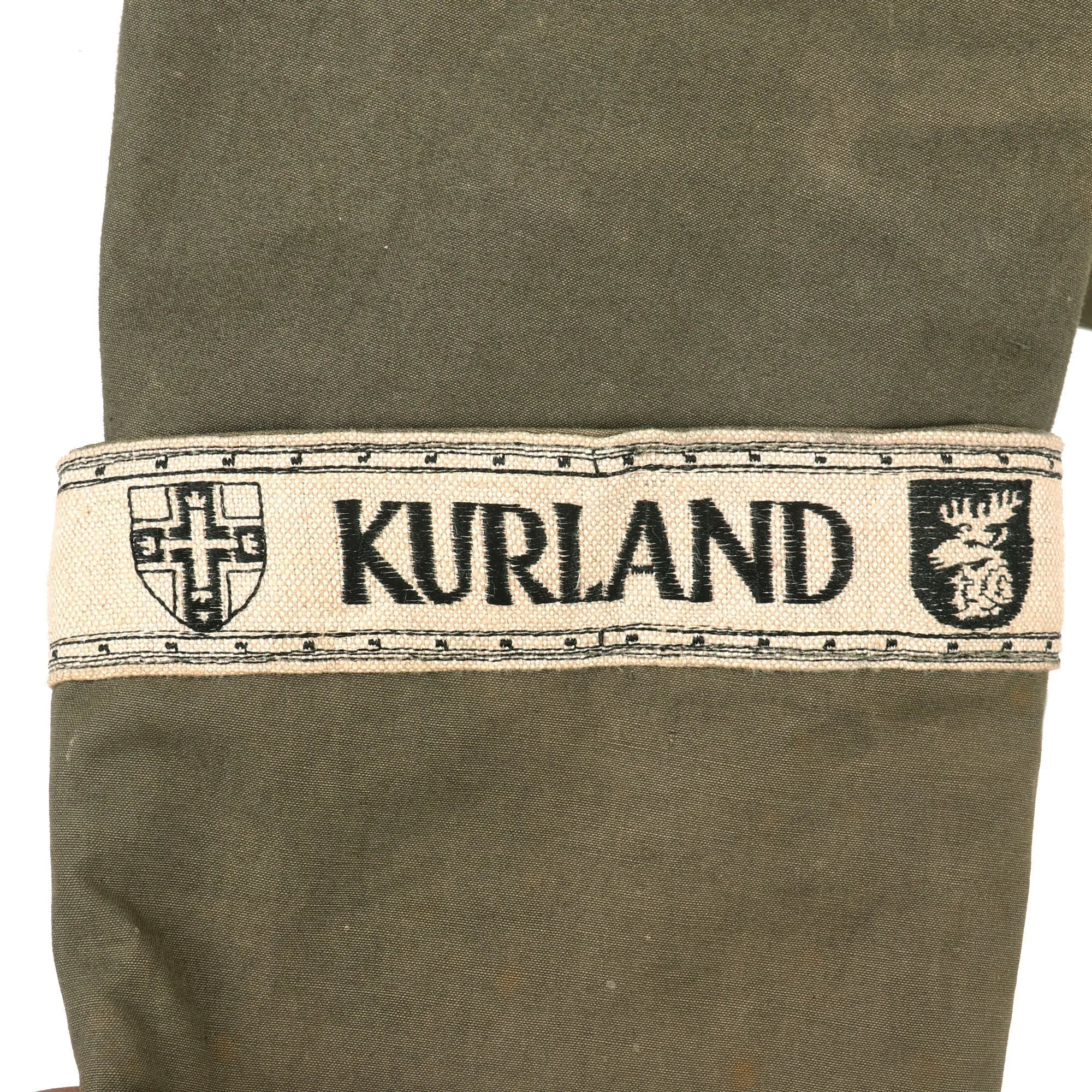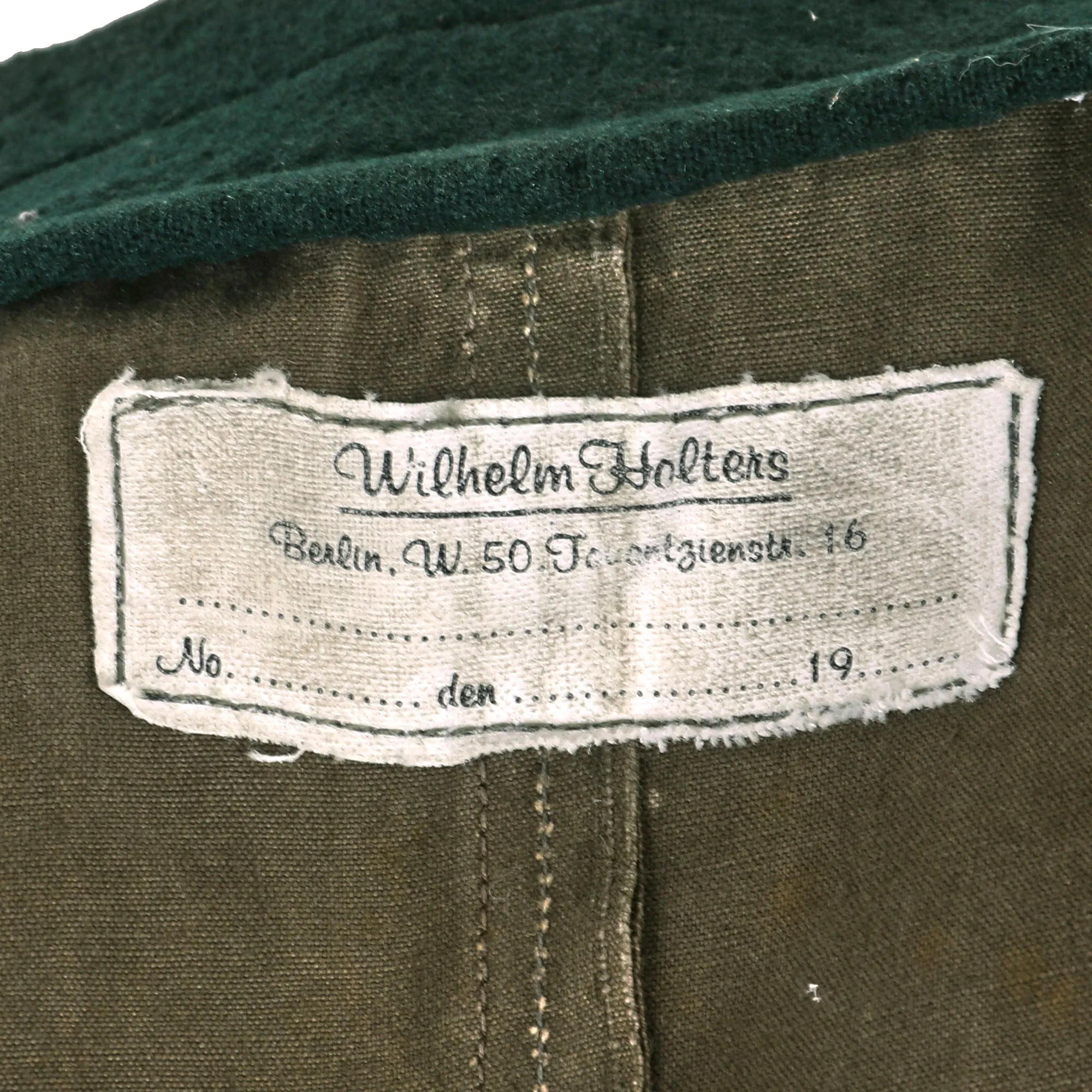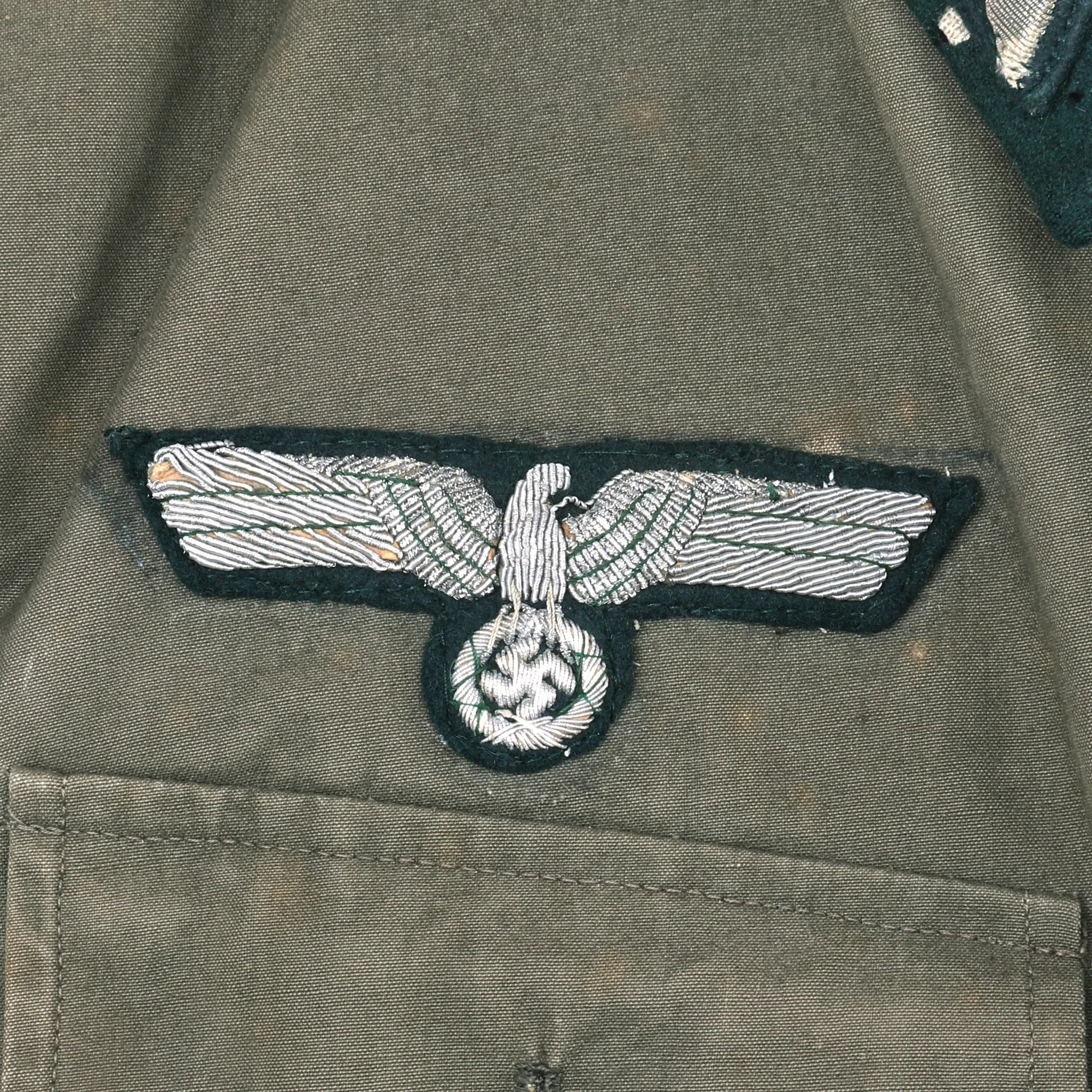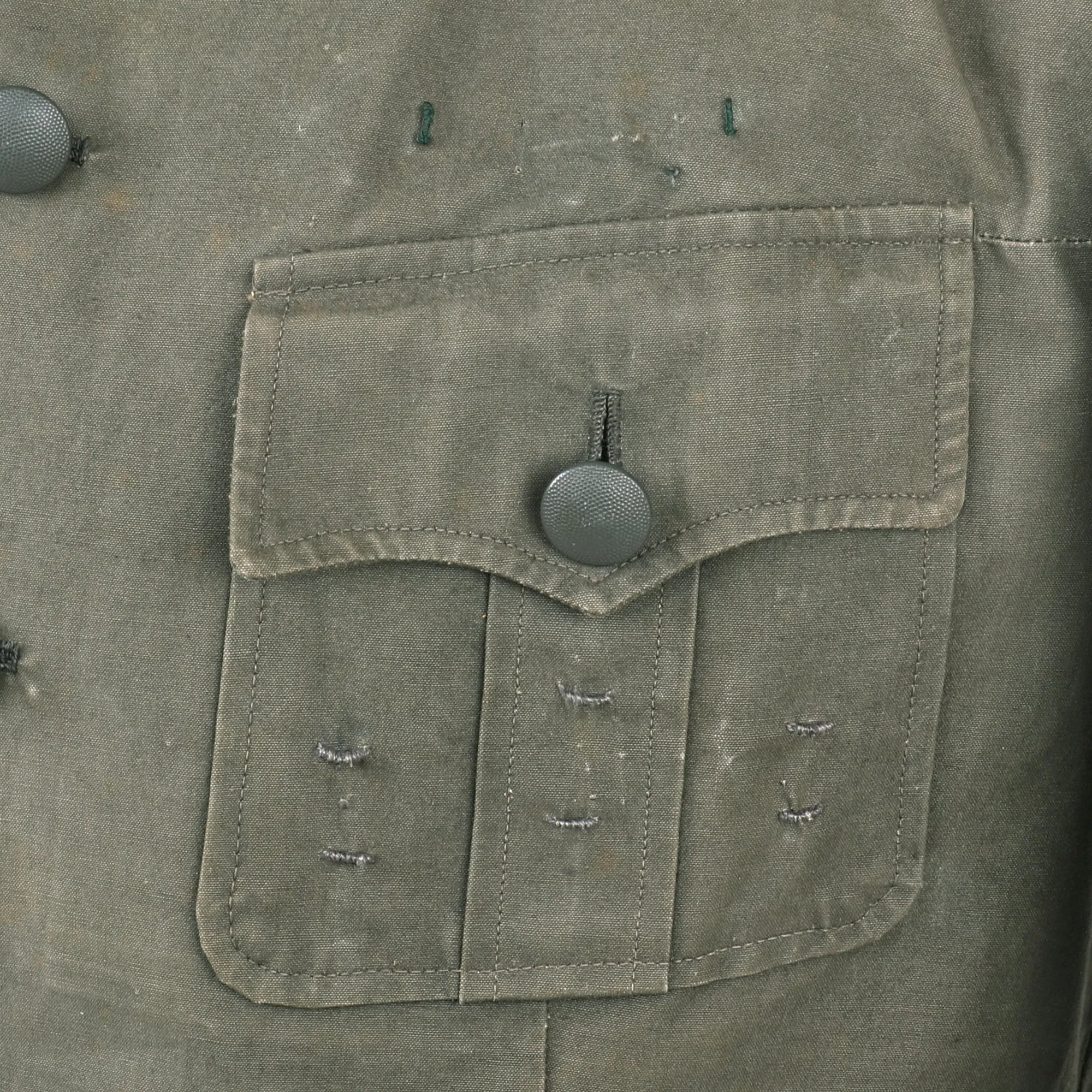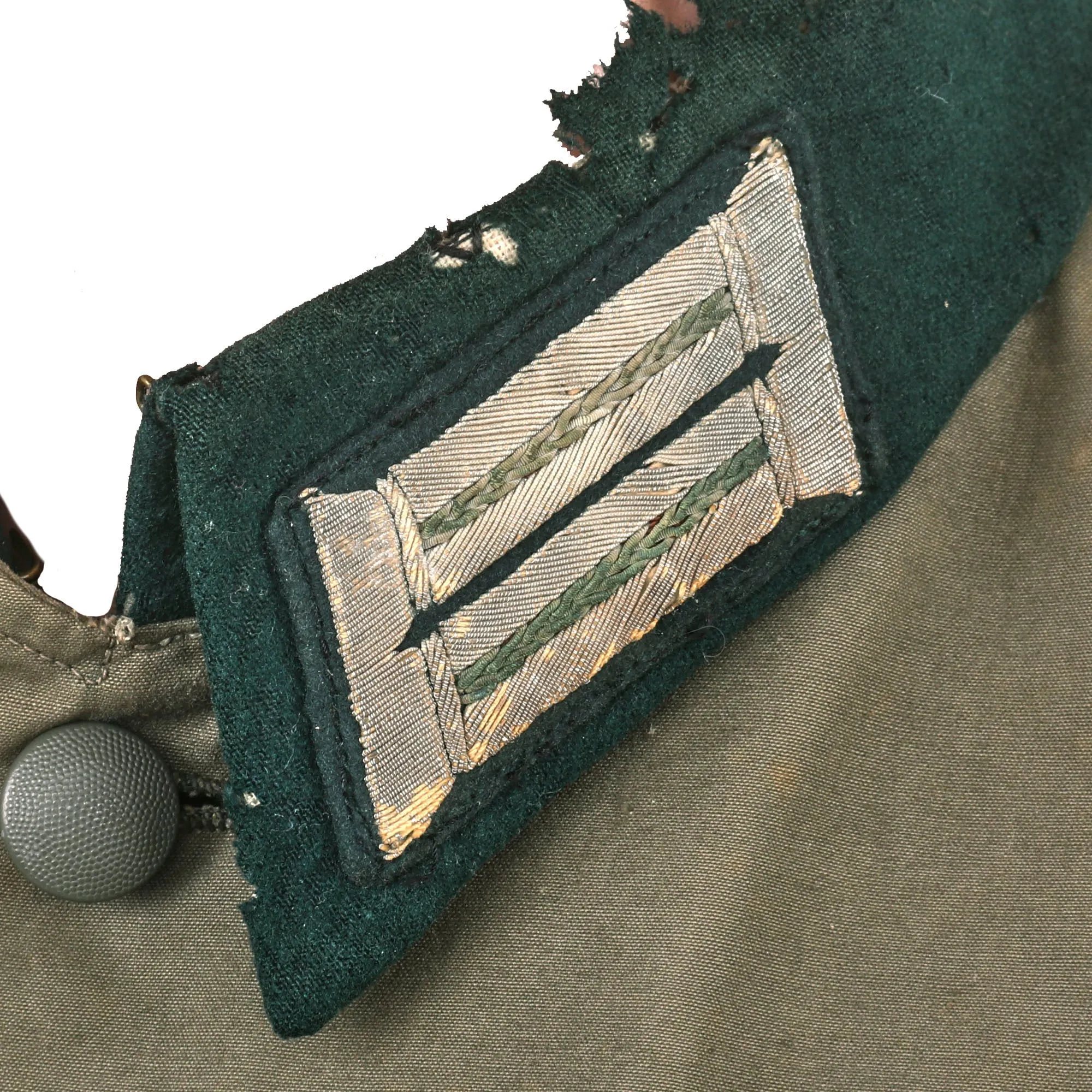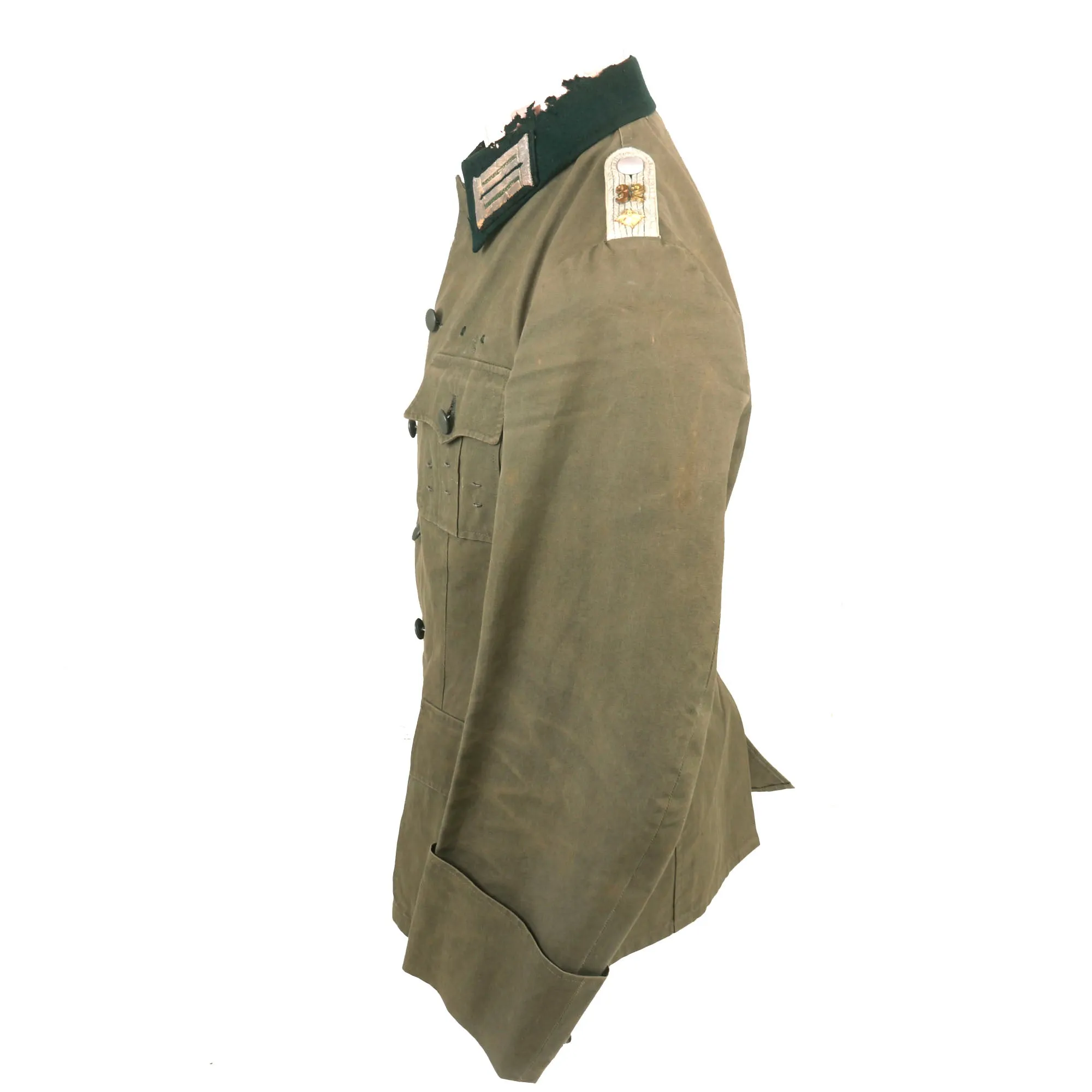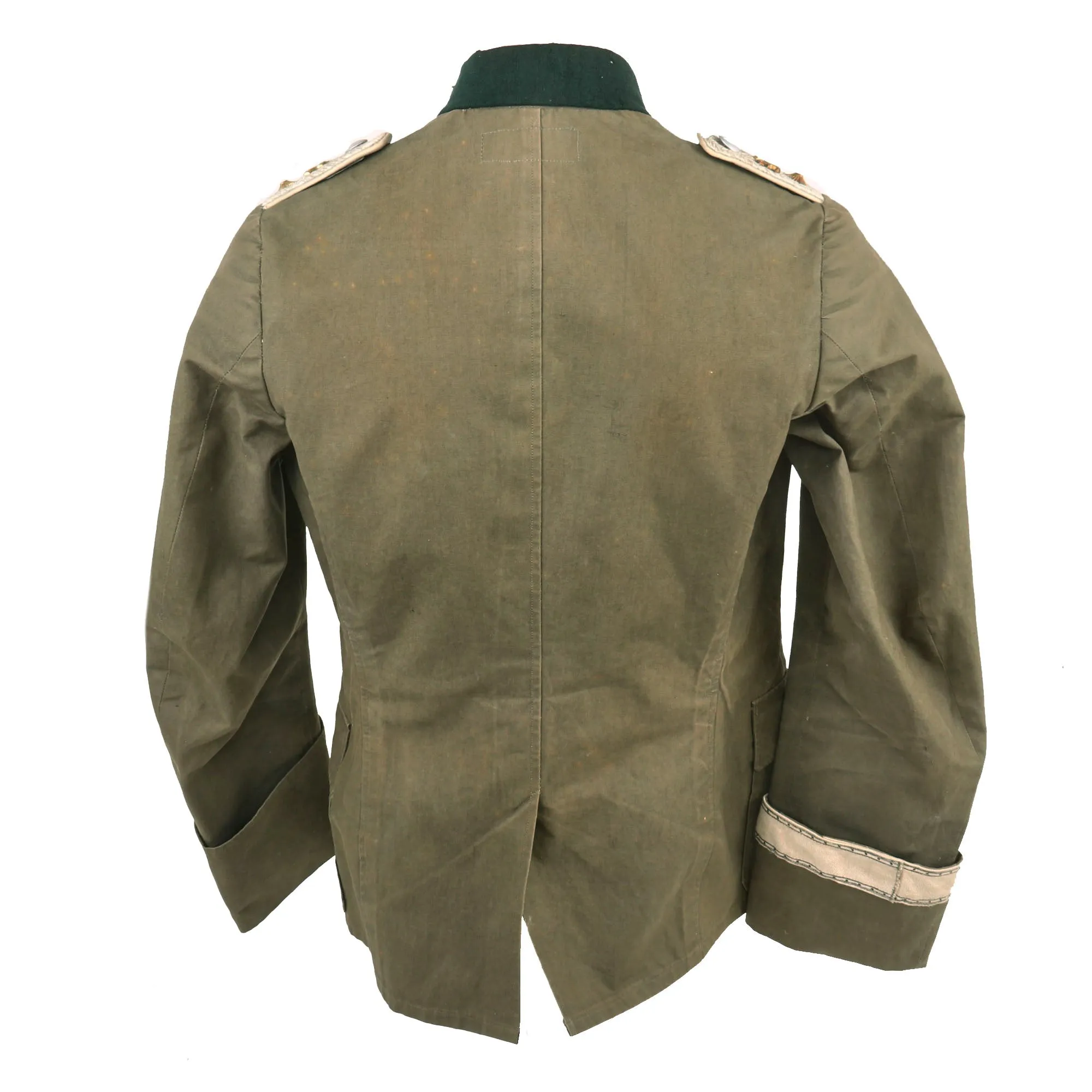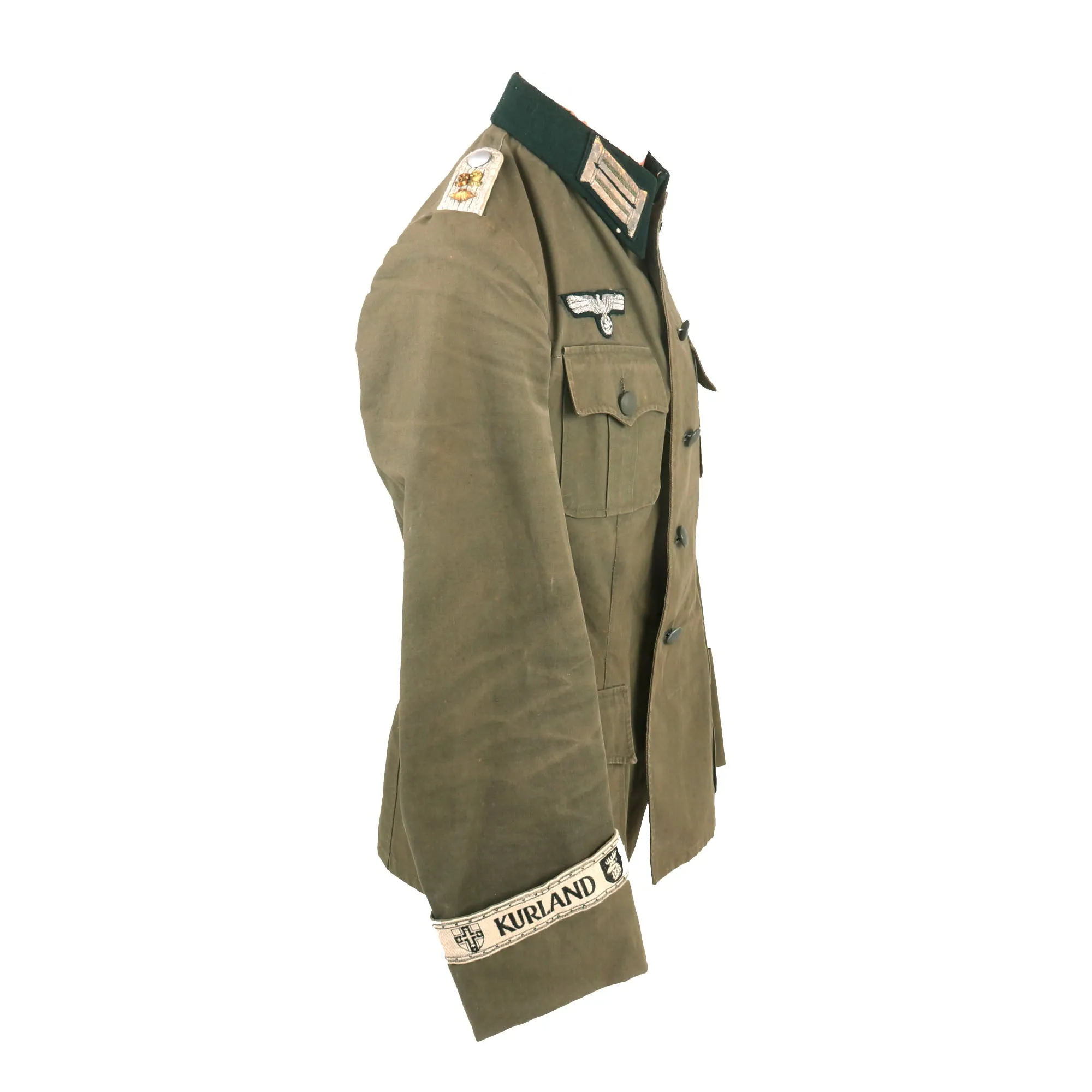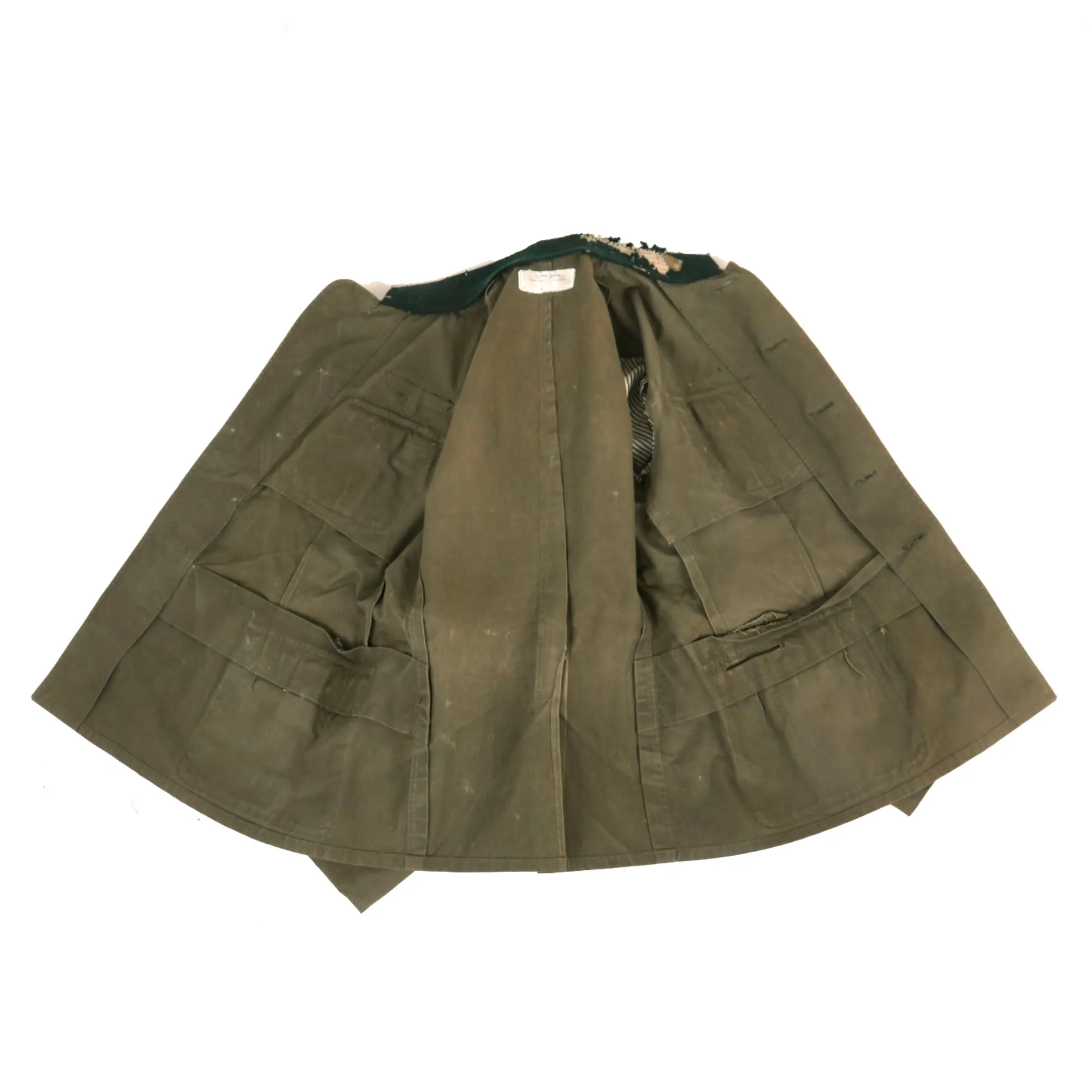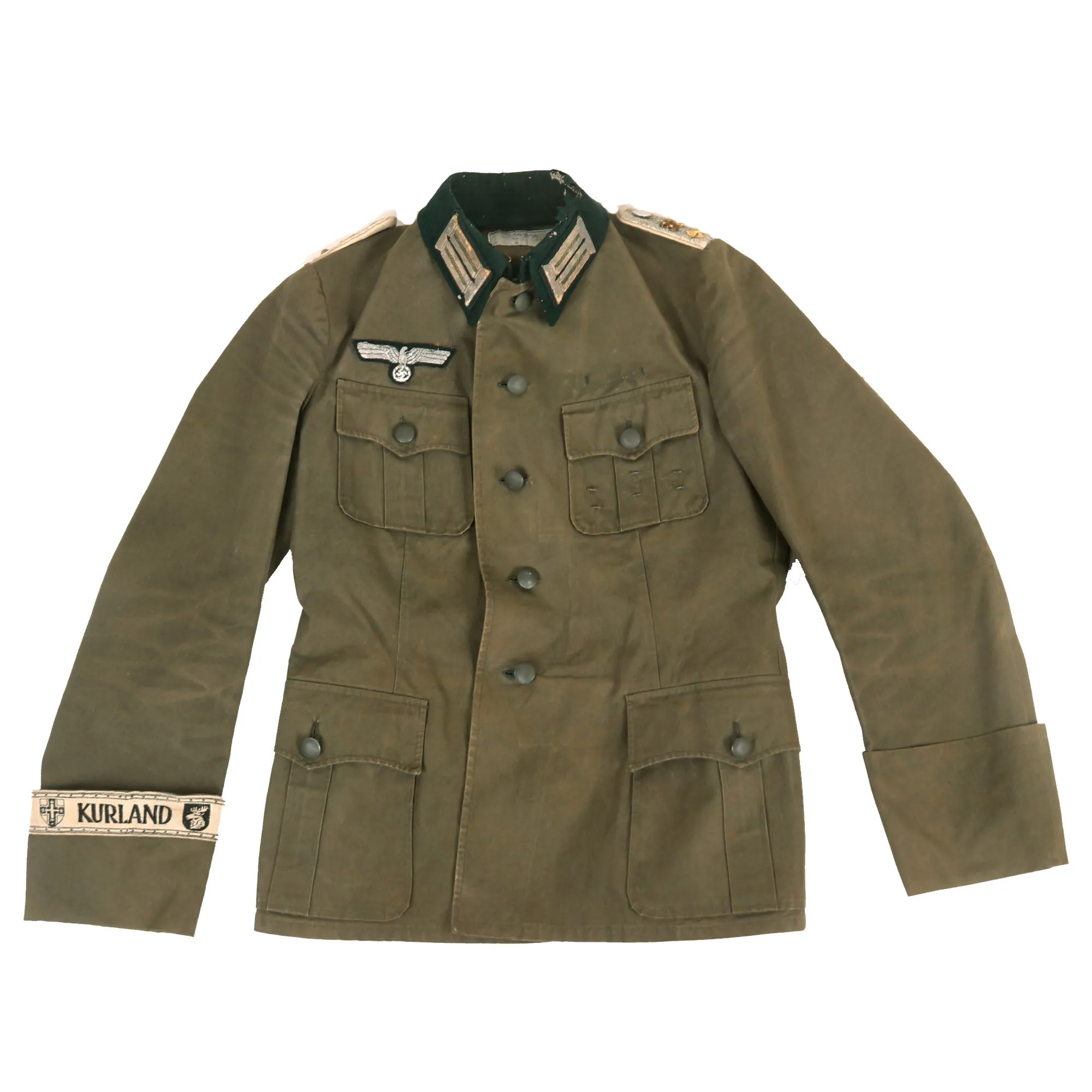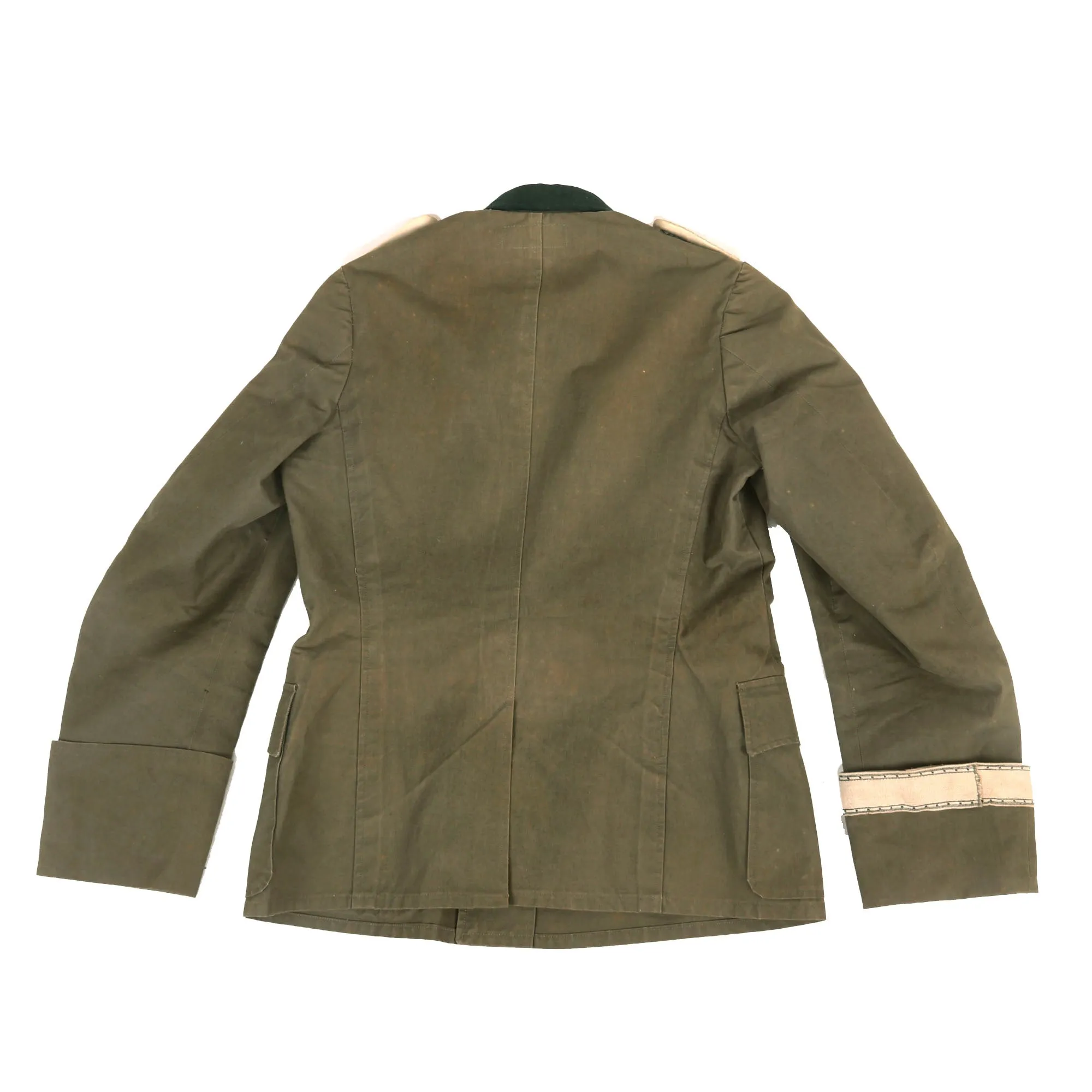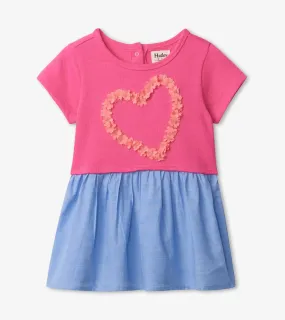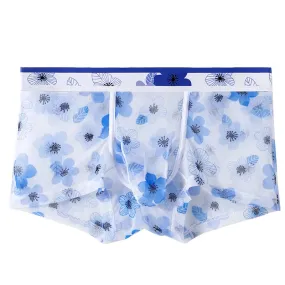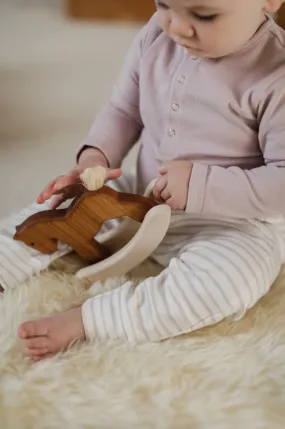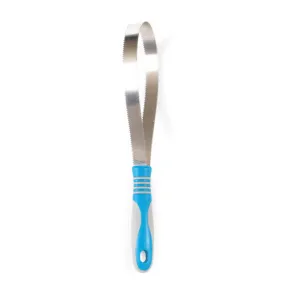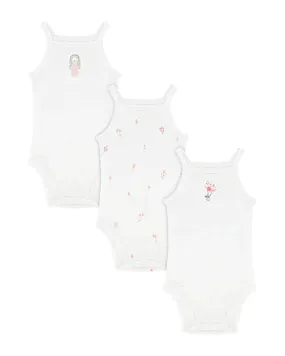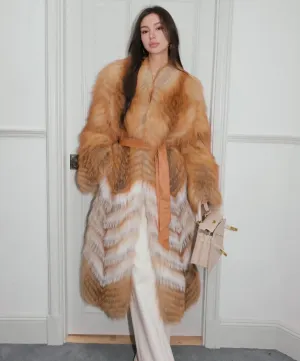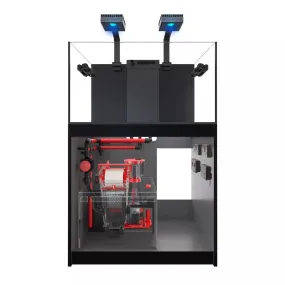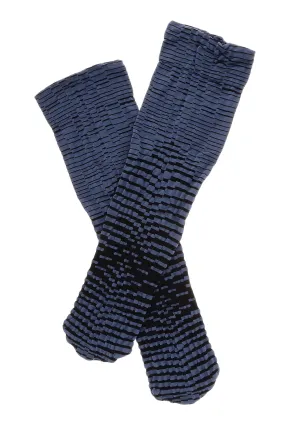Original Item: Only One Available. This is a very nice early tailor made German WWII Heer Army Summer Weight M-36 Tunic, showing moderate wear from service and in very good display condition. We usually see these made from canvas or some other "lower grade" material, but this example is made using very nice gray / light green cotton twill fabric, which is relatively soft. There is a tag under the collar from the prestigious firm of Wilhelm Holters of Berlin. The tunic features four pockets with scalloped flaps and pebbled aluminum buttons, and has a six button front closure, with two "hook and loop" fasteners for the collar. The buttons on the tunic are sewn directly to the fabric, not attached with metal circlips, and are in great shape, showing just a bit of oxidation.
The interior does not appear to be lined. There is an interior slash pocket right next to the button closure on the inside left breast. There are a few tears and some light staining, but the interior is really in good shape otherwise. There is the usual slot for the officer's dagger to hang out of the lower left pocket.
It is adorned with the usual rank and branch insignia used on German tunics. The attractive Army breast eagle is the correct officer's silver bullion hand embroidered type on a green background, and is very neatly hand stitched to the chest in a fashion typical of wartime German tailor work. The stitching for the eagle is visible on the interior. The eagle has some light wear with some small bullion bits out of place. There are small stitching slits on and above the left breast pocket for placement of medals & a ribbon bar but they are absent.
The collar is wrapped in a dark-green wool which has been heavily eaten at by moths, and has officer's field litzen collar patches on each side, which are woven from silver bullion thread with a dark green background matching the collar. The colored stripes on each were originally Weiß (white), the Corps Color (Waffenfarbe) for infantry and motorized infantry. The white bullion would usually be painted over brass, which is why it has oxidized to a greenish color. The collar is in fair shape, though there is a bit of wear and as mentioned there is heavy moth damage to the green.
The “sew-in” style company officers schulterklappen (shoulder boards) of this tunic are constructed with two rows of fine silver flatware "Russia Braid" double piping and have the correct piping around the edges. There is one rank pip installed on each, indicating the officer rank of Oberleutnant (1st Lieutenant). Above these pips are the numerals 32 indicating Infanterie Regiment 32.
The left cuff of this example bears a very rare KURLAND cuff title, only awarded to soldiers trapped in the "Courland Pocket", some of the last Germans to surrender during the war. Gebauer's service record confirms that he was in a unit stationed to that pocket, and was eligible to receive the award. Close examination shows that it matches other period examples, which actually had to be locally manufactured due to the encirclement of the pocket.
This cuff title was awarded to Wehrmacht servicemen of Army Group Courland who served in the Courland Pocket. The cuff title was approved on 12 March 1945 by AH, on the recommendation of the commander of the Army Group Courland. It was the last German award to be instituted in World War II. Distribution began in late April 1945. The cuff title is stitched directly to the cuff and is in great condition.
Overall condition is good, with some heavy wear and staining consistent with service. As mentioned there is some heavy moth damage on the collar, but the damage appears to be here only. This is a uniform tunic that saw heavy service during the war, and overall it displays very nicely.
Ready to outfit with medals / decorations and display!
Approximate Measurements:
Collar to shoulder: 8.5"
Shoulder to sleeve: 26”
Shoulder to shoulder: 14”
Chest width: 19”
Waist width: 18"
Hip width: 20”
Front length: 28.5"
Terms such as M40 and M43 were never designated by the Wehrmacht, but are names given to the different versions of the Model 1936 field tunic by modern collectors, to discern between variations, as the M36 was steadily simplified and tweaked due to production time problems and combat experience.
Field Tunic (Feldbluse) Model 1936
When the NSDAP came to power in early 1933 the Reichswehr, the armed forces of the Weimar Republic, were near the end of a two-year project to redesign the Army Feldbluse (field-blouse). Beginning in that year the new tunic was issued to the Reichsheer and then the rapidly growing Wehrmacht Heer, although minor design changes continued to be made until the appearance of the standardized Heeres Dienstanzug Modell 1936. The M36 tunic still retained the traditional Imperial and Reichswehr uniform color of grey-green "field gray" (feldgrau) wool, but incorporated four front patch pockets with scalloped flaps and pleats (on Reichswehr tunics the lower pockets were internal and angled). The front was closed with five buttons rather than the previous eight, and the collar and shoulder straps were of a dark bottle-green instead of the Reichswehr grey. Compared to the Weimar-era uniforms the skirt of the feldbluse was shorter and the tailoring was more form-fitting due to Germany's adoption of mechanized warfare: soldiers now spent much time in the confined space of a vehicle and a shorter jacket was less likely to pick up dirt from the seats. It also included an internal suspension system, whereby a soldier could hang an equipment belt on a series of hooks outside of the tunic. These hooks were connected to two straps inside the lining, which spread the weight of equipment without having to use external equipment suspenders. The M36 was produced and issued until the very end of the war, though successive patterns became predominant.
SS field uniforms were of similar appearance externally but to fit their larger patches had a wider, feldgrau collar, and the lower pockets were of an angled slash type similar to the black or grey SS service-dress. The second button of an SS Feldbluse was positioned somewhat lower, so that it could be worn open-collar with a necktie. Due to supply problems the SS were often issued army uniforms.




